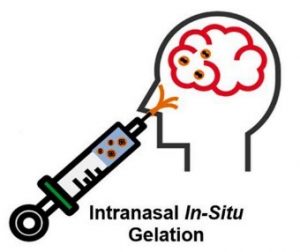In situ-gelling nanoparticle-based hydrogels for site-specific drug delivery

Tech ID
21-001
Inventors
A. Babar
M. Majcher
X. Li
A. Lofts
M. Campea
T. Hoare
Patent Status
US application filed
Development Status
Proof of principle data available;
ACS Appl. Mater. Interfaces, 2023
Contact
Amy Hector
Business Development Manager
Abstract
The penetration of drugs across biological barriers is a key challenge in drug delivery. For example, existing oral or injectable drug delivery strategies targeting the brain typically demonstrate low bioavailability while anti-tumour therapies often cannot access the necrotic tumour cores, leading to frequent tumour recurrence.
Researchers at McMaster have addressed this challenge by creating in situ-gelling and degradable bulk nanoparticle network hydrogels made of biocompatible functionalized polysaccharide-based nanoparticles gelled with complementary polymers. Rapid in situ crosslinking can be tuned for specific drug encapsulation and effective biological immobilization, while the tunable crosslink stability within the hydrogel can enable timed local release of ultra-small polysaccharide nanoparticles that can effectively penetrate across challenging biological barriers (e.g. into solid tumours or into the brain), in some cases triggered by the local environment where release is desired (e.g. the intratumoral space). The gel can also be formulated with specific key properties (e.g. mucoadhesion) that can improve local drug retention and can be formulated as an injection or a spray for easy administration (the latter enabling access to the brain via the intranasal pathway).
Applications
- Organ and/or site-specific drug delivery, for example:
- anti-tumor chemotherapeutics with lower toxicity and enhanced penetration into tumour cores
o anti-psychotics to the brain for treating schizophrenia, Parkinson’s disease, bipolar disorder, or other brain-related disorders
- anti-tumor chemotherapeutics with lower toxicity and enhanced penetration into tumour cores
- Anti-fouling coatings (e.g. on medical devices)
Benefits
- Biocompatible with time or local microenvironment- triggerable degradation for localized drug release
- Enables penetration into local tissues while still facilitating local depot formation at that tissue
- Allows for site-specific drug delivery to the brain that bypasses the blood-brain barrier

